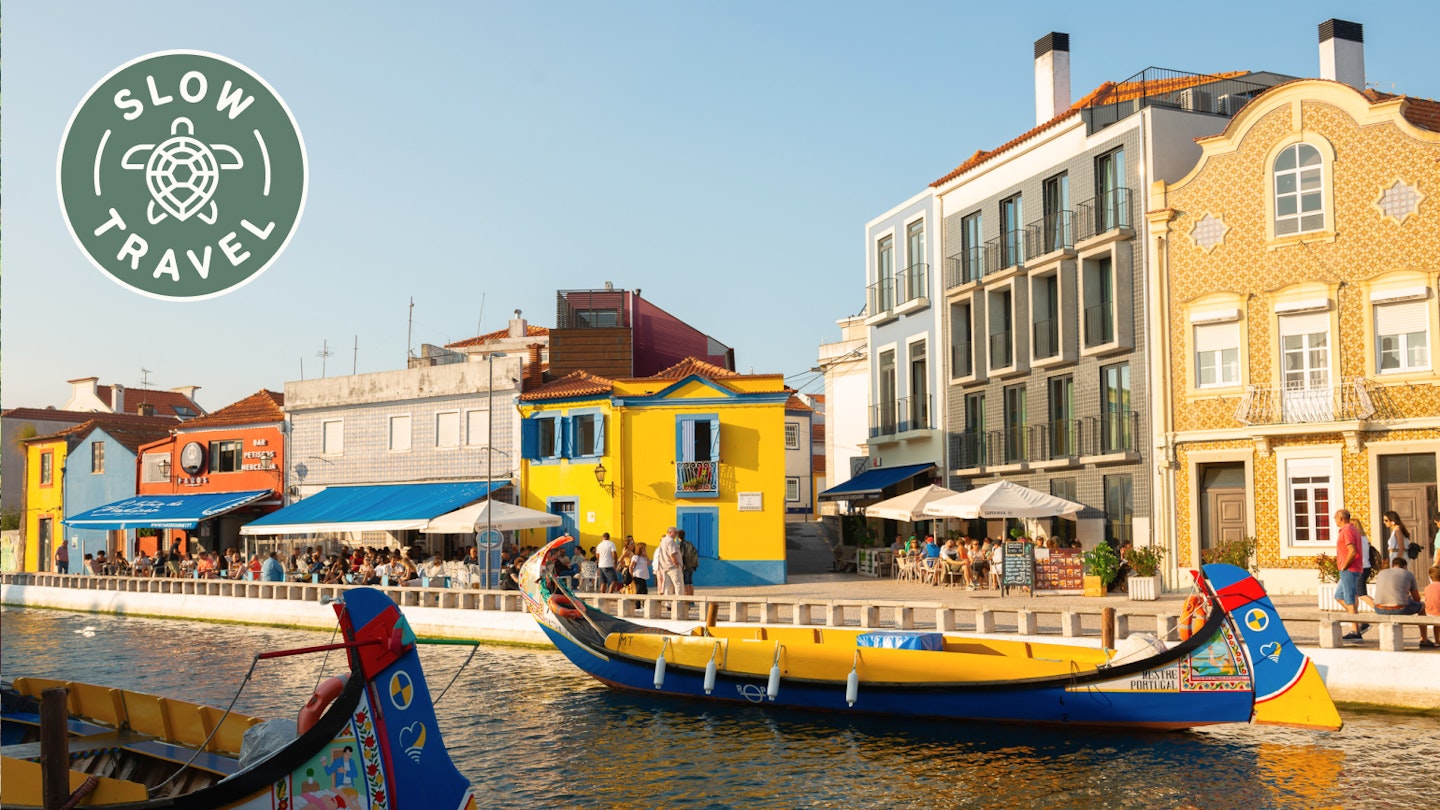Coastal Journey from Lisbon to Porto
Our slow travel series explores how you can take more mindful journeys by train, boat, bus or bike – with tips on how to reach your no-fly destination, and what to see and do along the way. We asked Austin Bush to take the road less traveled route between Lisbon and Porto.
The typical route between Portugal’s two largest cities can be done by bus or train in around four hours. However, these journeys are almost entirely inland, neglecting the mesmerizing beauty of the Portuguese coast.
As the Atlantic Ocean seems to be woven into the very fabric of the Portuguese identity, I aimed to make my coastal travels the centerpiece of this experience. Consequently, I devised a route from Lisbon to Porto which included overnight stays in three charming coastal towns, each showcasing a different aspect of Portugal’s stunning and diverse coastline.
Lisbon to Peniche
My trip began rather unceremoniously at Sete Rios bus station, just north of central Lisbon. I secured a seat on a privately run bus service for the hour-and-a-half ride to Peniche. This route is almost exclusively inland, with only a brief passage through Lisbon’s picturesque wine region. My first glimpse of the Atlantic came after ascending a hill in Lourinhã, just south of my destination.
Perched on a rocky peninsula jutting into the Atlantic, Peniche boasts a historical center that’s both dense and charming, fronted by the imposing Fortaleza de Peniche. Although closed for renovations during my visit, the fortress dates back to the 16th century and served as a prison for political dissidents during Portugal’s decades-long dictatorship. Upon completion, it will house a museum dedicated to the Portuguese who resisted fascism.
Eager to explore the coastline, I left my luggage at the hotel and purchased a ticket for a day trip to the Berlenga Islands. Located six miles off the coast of Peniche, this tiny archipelago has been attracting visitors since ancient times. Various boats, both fast and slow, ferry travelers to Berlenga Grande, a dry and rocky island home to a small beach and several hiking trails. Surrounded by cliffs and azure waters, the walk to the 16th-century fortress is a must; it’s one of the most picturesque swimming spots I’ve experienced. I’d recommend self-catering from Peniche’s fresh market, as the dining options on the island can be limited and pricey.
Peniche to Nazaré
The following afternoon, I hopped on another bus for the hour-long journey to Nazaré. If Peniche felt dense and rugged, Nazaré felt open and airy, welcoming visitors with a wide, postcard-perfect sandy beach framed by steep cliffs. With its assortment of tourists, hotels, and ice cream vendors, Nazaré bears some resemblance to beach destinations like Coney Island.
The centerpiece of Nazaré is its mile-long beach, a popular summer destination for thousands. At the midpoint near colorful fishing boats, vendors sun-dry and prepare seafood, which is sold in stalls lining the boardwalk. Strolling north, visitors can find traditional wood-and-cotton sun bathing tents known as barracas, available for rent.
High above, the cliff-top community of Sítio offers breathtaking views over the village, historical buildings, and a lighthouse overlooking a stormy sea. It’s also famous for the massive waves generated by an undersea canyon nearby, attracting surfers from all over the world.
Nazaré to Aveiro
For the next leg to Aveiro, a bus offered a convenient departure time. The journey, mostly inland, is the perfect opportunity for a quick nap or a podcast break. Positioned on the edge of a vast lagoon, Aveiro is often referred to as the “Venice of Portugal.” Colorful boats known as moliceiros, once used for transporting seaweed, now guide tourists through the city’s canals.
If you prefer a more immersive experience, consider cycling to Marinha da Troncalhada at the lagoon’s edge, where you’ll find the area’s old salt flats still in operation. Observing the salt farmers at work can be quite fascinating, especially if you arrive in the morning!
Aveiro to Porto
With less than 50 miles separating Aveiro and Porto, this journey can be completed by bus or train. I opted for the bus, while the train offers fleeting coastal views. Porto, like Lisbon, is situated by a river, just a stone’s throw from where it meets the ocean.
In Portugal, the sea is always within reach.




